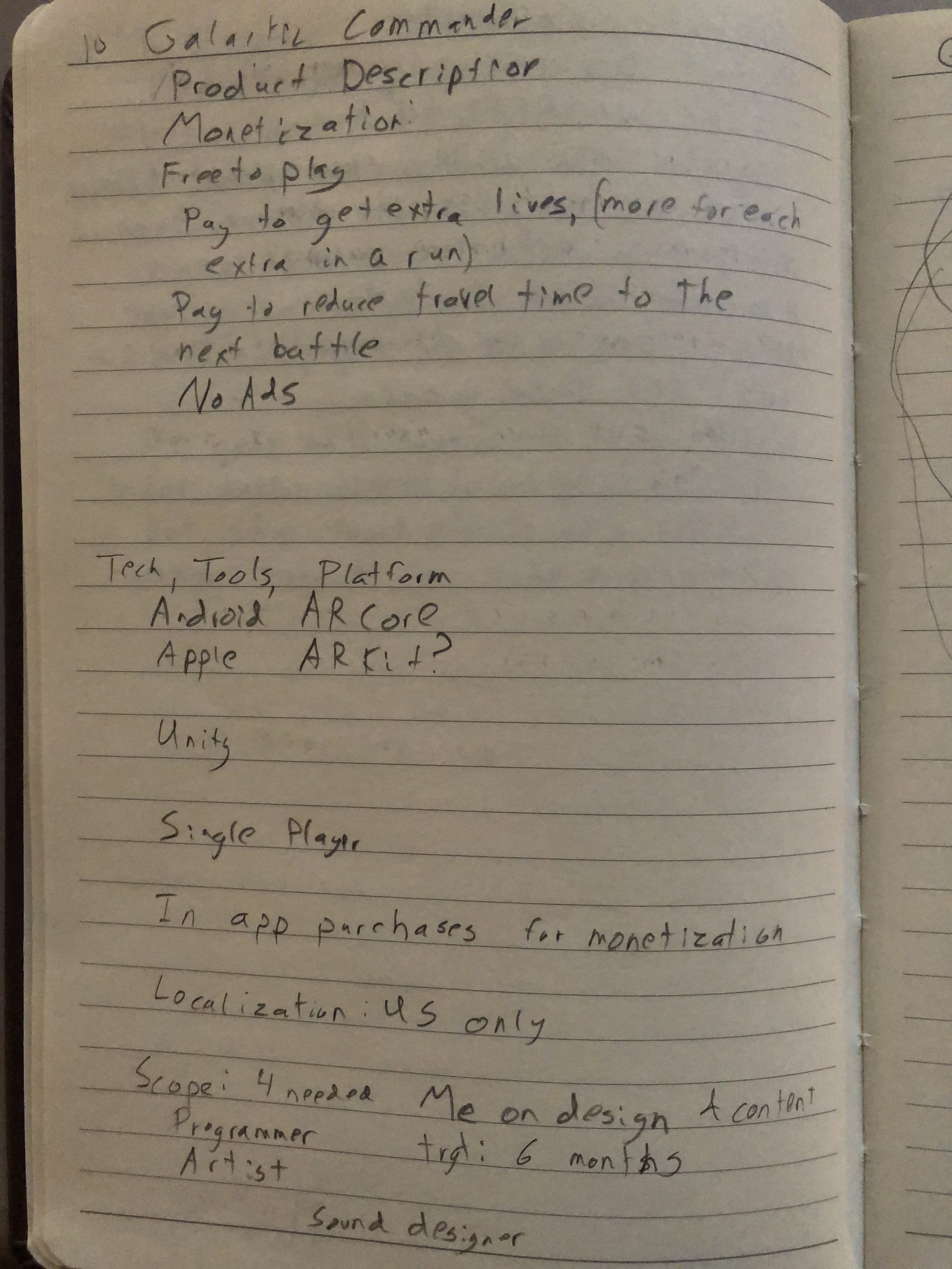Galactic Commander
After my work on Space Pirates was still hungry to explore tactical space combat in AR. I was convinced that AR can help solve the problem of positioning units in 3d space, and worked with Jake Wilson to make a full game. This page will document the progress on said game which is currently called Galactic Commander.
This Sections below outline my design process from start to finish, with most recent steps at the top
Interaction Map and User Interface
Once the core systems and content were established I could begin to think about what information the player needs during each phase of the game, and how the interactions should flow. To organize this information, I used an interactive nonlinear story program called “twine” to create an interaction map. On each screen of the interaction map I sorted the information players would need a that stage into three “tiers” with the first being most important. This way I would have a guideline for which information to highlight when mapping out the UI.
Combat System
With the high level description defined, I started working on the combat system. Players will command ships in fleet to fleet combat, so they will need interesting choices about which ships to use in their fleet, ways to move these ships, and destroy ships. I decided on turn based combat to free up cognitive load to use on 3D combat which I am worried about being difficult for players to mentally map. For actions in combat I chose an action point allowance system because I believe it offers immense tactical choice to players.
I decided to use a combination of weapon modules and ship profiles to make unique ships. A ship profile would have parameters for movement speed, initiative, hit points (HP), shield points (SP), Evasion, and a damage profile to describe how effective each of its faces is. The weapon modules define the number of action points it costs to use it on a turn, the cooldown defines how many turns need to pass before it can be used again, the base damage range of a successful attack, the damage types, and the base accuracy.
The ship damage profiles show above modify the base damage a weapon module will deal if used off a particular face of the ship. For example the fighter can only use weapon modules to attack out of the front arc, and will deal 65% damage. This way I can use the same weapon modules, but they’ll play much differently on fighters than battleships. The damage profiles are set so players know how to maneuver around and use each ship, regardless of the weapons on it.
Power is the primary metric I’ll use to compare the power of a given ship for use in balancing encounters. The current metric is the base power of the ship plus the power multiplier times the sum of the weapon power values. Base power is the number of slots (S) times 5 plus the sum of HP, SP, Evasion (EV), and Speed (SP), plus Initiative (I) divided by 10.
Base Power = S x 5 + HP + SP + EV + SP + (I/10)
The image above shows several weapons from my balance model for reference. The damage types show how effective each type is at ship shields and hull. Shield points are depleted before hull points, and shield points are easier to regenerate. These damage types are chosen to make the choice of when to use a weapon more interesting. The Power Value is calculated as the mean damage ((min damage (MN) + max damage (MX))/2) multiplied by accuracy (Acc) divided by the AP cost (AP) divided by Cooldown (C)
Power Value = ( ( ( ( MN+MX ) / 2 ) x Acc ) / AP ) / C
Product Description
After the concept was set I started making the high level product description. This was my first stab at outlining the player experience and the systems needed to achieve it. The intension is that this will change over the course of the project, but something needs to exist to be changed in the first place. The sections include player experience, visual and audio style, game world fiction, monetization, Technology, and scope. To see these sections in detail please see the images to the left.
I should mention the framework for my high level documentation is based on recommendations from Michael Sellers’ Advanced Game Design: A System's Approach.
High Level Concept
The first step was to outline the High level concept including Working title, concept statement, genre, target audience, and USPs. The image to the left outlines the results of this concept in detail.




